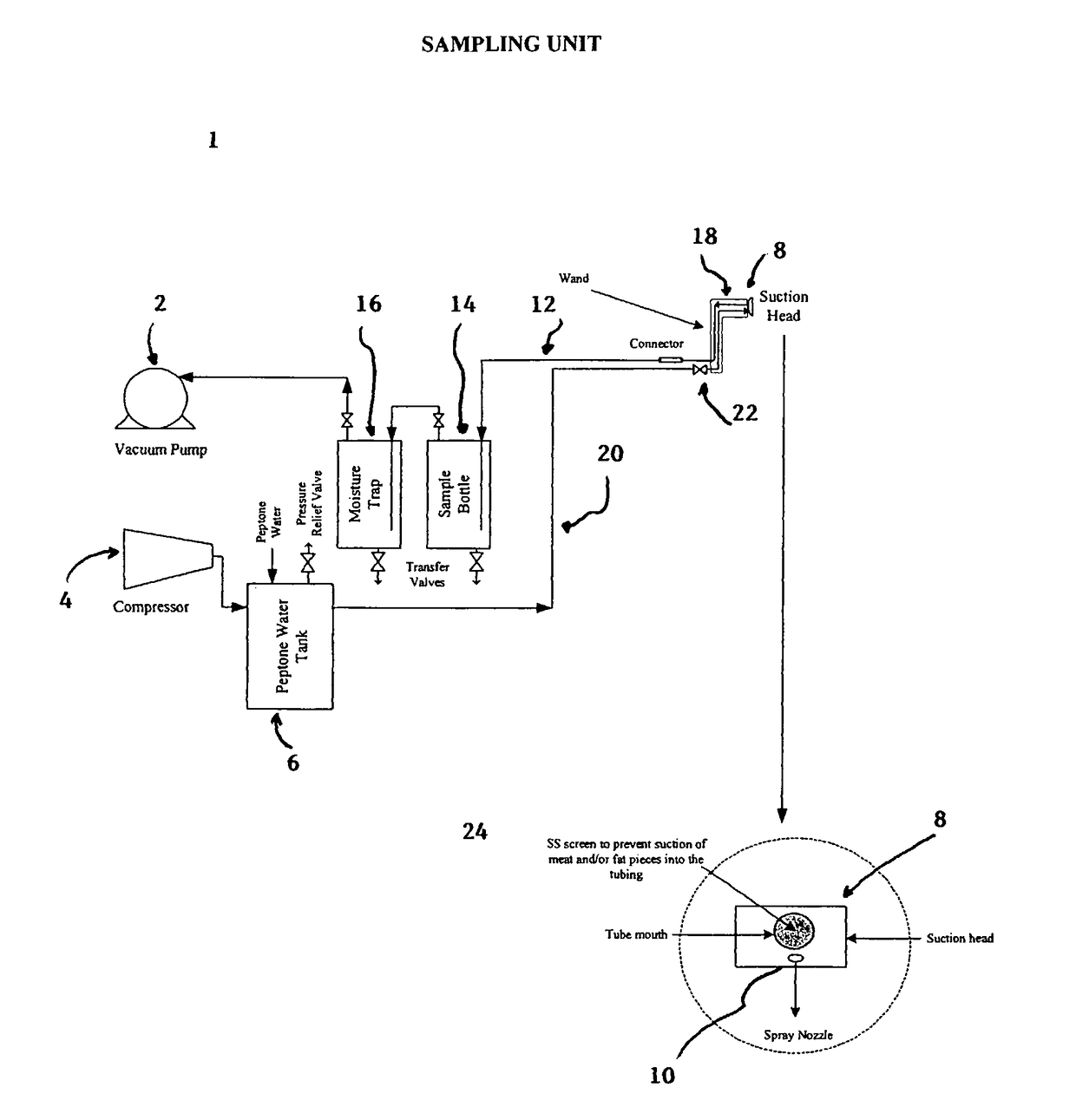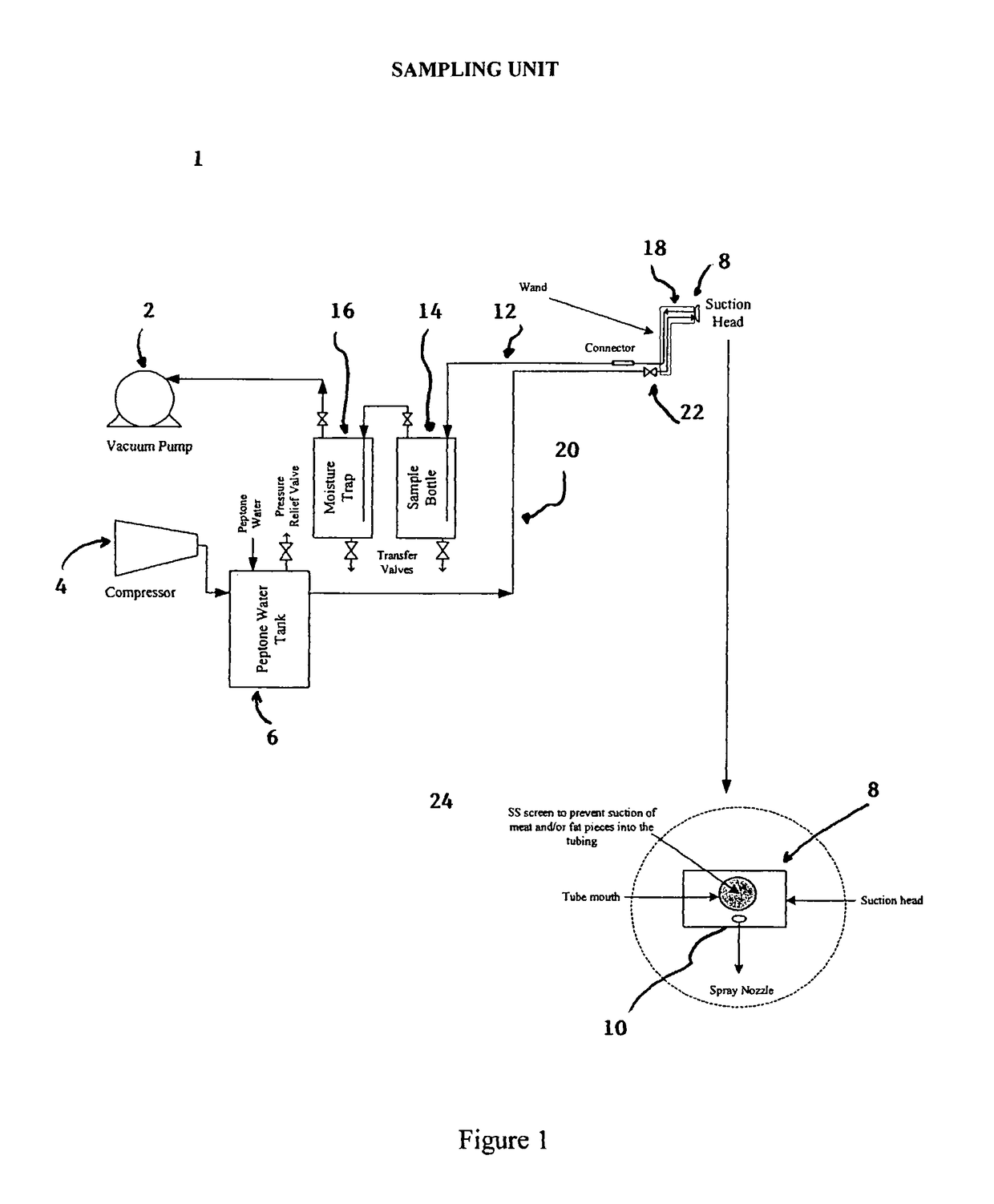Microbial sampling device
a sampling device and microorganism technology, applied in the field of microorganism sample collection, can solve the problems of unfavorable aesthetic quality and desirability of food products, unfavorable microorganism collection, and significant challenge in surface and air sample collection for microorganism analysis, so as to promote microbial growth and promote microbial growth
- Summary
- Abstract
- Description
- Claims
- Application Information
AI Technical Summary
Benefits of technology
Problems solved by technology
Method used
Image
Examples
example 1
[0054]The exemplary apparatus 1 of FIG. 1 was compared to current art swab sampling methods for collection of a microbial sample from a meat surface. Meat surfaces were freshly prepared by thinly slicing a whole top round portion of beef using a sterilized knife. The internal tissue of such whole rounds is generally regarded as having a low microbial organism level. The freshly prepared surfaces were then inoculated at two different levels (105 and 104 CFU / 100 cm2) with Biotype I Escherichia coli (ECC) prepared from known stock laboratory cultures in slurry of sterilized fecal matter. Surfaces were inoculated by spreading 10 mL of the slurry on a 300 cm2 area of the surface to be sampled, according to the schematic provided in FIG. 3.
[0055]Swab samples were collected using sterile sponges moistened with 25 mL of 0.1% peptone water, according to standard methodology recommended by the United States Department of Agriculture (USDA), Food Safety and Inspection Services (FSIS). The appa...
example 2
[0058]The apparatus 1 of FIG. 1 was compared to current art-recognized swab sampling for collection of a microbial sample from a hard surface. A FORMICA™ surface was inoculated at two different levels (105 and 104 CFU / 100 cm2) with Biotype I Escherichia coli (ECC) prepared from known stock laboratory cultures in slurry of sterilized fecal matter. Surfaces were inoculated by spreading 10 mL of the slurry on a 300 cm2 area of the surface to be sampled, according to the schematic provided in FIG. 3.
[0059]Swab samples were collected using sterile sponges moistened with 25 mL of 0.1% peptone water, according to standard methodology recommended by the United States Department of Agriculture (USDA), Food Safety and Inspection Services (FSIS). The apparatus 1 of FIG. 1 was used to collect comparative samples. The sampling fluid reservoir contained 0.1% peptone water, and a volume of approximately 25 mL was applied to the surface while simultaneously using the vacuum to recover the applied f...
PUM
| Property | Measurement | Unit |
|---|---|---|
| surface area | aaaaa | aaaaa |
| area | aaaaa | aaaaa |
| volume | aaaaa | aaaaa |
Abstract
Description
Claims
Application Information
 Login to View More
Login to View More - R&D
- Intellectual Property
- Life Sciences
- Materials
- Tech Scout
- Unparalleled Data Quality
- Higher Quality Content
- 60% Fewer Hallucinations
Browse by: Latest US Patents, China's latest patents, Technical Efficacy Thesaurus, Application Domain, Technology Topic, Popular Technical Reports.
© 2025 PatSnap. All rights reserved.Legal|Privacy policy|Modern Slavery Act Transparency Statement|Sitemap|About US| Contact US: help@patsnap.com


